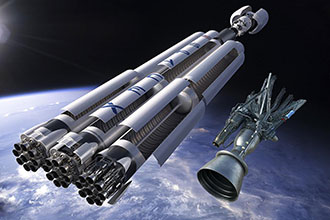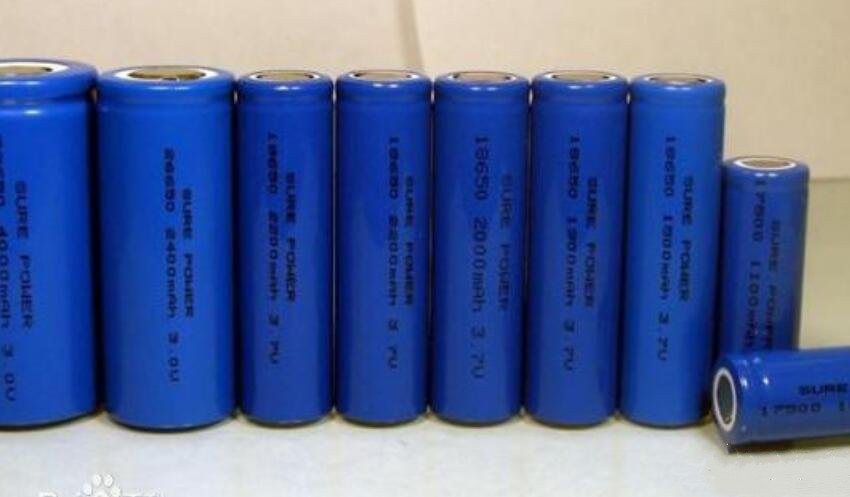Sunlight Seasons
Seasons come and seasons go. I am subject to the rhythms of nature and the change of its seasons. Nature’s seasonal transitions encompass the changing cycles of available sunlight for me.
Writing this article, located from my position in the Northern Hemisphere, I am experiencing the time of the December solstice. The winter solstice is that day of the year when I will receive the least amount of sunlight—as measured from sunrise to sunset (Figure 1).

Figure 1: The sun sets during the winter solstice in British Columbia, Canada. (Source: Mouser)
Shortly, spring will appear. The days will lengthen and the amount of sunlight will increase. I enjoy this lengthening of days with its increasing amount of sunlight. It always seems to make my moods feel better. I can take advantage and make the most of the remaining daylight after work, often riding my mountain bike through the woods, over the roots, and down and up the ravines. This changing season’s length of sunshine goes on automatically, without any need for my input or control.
Man is smart, so he has created devices that provide himself with light. In cities, towns, and villages throughout the world, man harnesses his own created-illumination devices to gleam light into the recesses of the darkness. Civilized society, a connected social order advancing cultural creation, employs these lighting devices in order to chase away the darkness and pave the way for a brighter future.

At one time, this source of light was through items like wax candles. What a mess! It must have taken great efforts and pains to illuminate a large location and keep it well lit.
However, the technological reality of the Internet of Things (IoT) now empowers smart connected lighting within a coordinated system. Hardwired and wireless systems allow secured data to connect lighting systems through a coordinated and intelligent approach. This article articulates how smart connected lighting is enabling a bright future.
Smart Connected Lighting
A season of change is underway. The IoT is dawning today as a revolution in technology. Smart sensor technology and radio-frequency (RF) wireless connectivity have combined to produce new methods to sense and collect data and get it onto the Internet. IoT is enabling building automation utilized for industrial and personal (home) use. Automation within buildings and cities is taking advantage of human intelligence. Specifically, it is aiming to program electronic systems in a coordinated and integrated fashion to mimic or improve upon this human intelligence, thus providing an automated system with a level of smartness. In this case, smartness means the ability to meet and perform to an acceptable level of a desired aim or goal. The goal of these efforts is to produce more intelligent and robust systems, which will improve people’s living conditions while lowering costs and decreasing negative environmental impacts.
Connected lighting systems consist of three key ingredients:
- A light source such as a light bulb or LED
- A light fixture and electromechanical assembly to connect and secure the light source to its location, and
- A light switch or controller
The past several years have seen a rapid movement from traditional lighting sources to light-emitting diodes (LEDs). The success of LED lighting adoption is a natural pathway for software-controlled, smart, digital, connected lighting systems. Where previously simple up/down or push-button on/off switches were employed, today IoT coupled with electronically controlled lighting products are enabling smart, connected lighting applications.
Smart connected lighting, deployed in smart buildings, takes advantage of multiple electronic systems and platforms including motion sensors, integrating them with a variety of lighting control methods to provide solutions to suit virtually any lighting-control setting. Connected by means of the IoT and employing open and configurable infrastructures, data can be collected and utilized for intelligent decision-making and effective operations. Software’s great flexibility and the simplicity of digital design and control provide advantages for smart lighting platforms. Leading electronic component vendors are presently developing LEDs, LED drivers, sensors, power electronics and various electronic control devices for smart lighting products. It is a discernible trend that these manufacturers are working to ensure that their products successfully integrate with or within designs in the building automation industry.
Automated lighting systems set up in this manner are called smart lighting. In the future, businesses and homeowners will increasingly take advantage of the leverage provided by connected lighting and the IoT. Smart lighting allows for autonomous and programmed control of illumination levels and colors and simultaneously identifies when traffic or building occupancy activities warrant adjustments, providing for a more optimized experience for users and owners. Regardless of whether it involves illumination lighting in offices, in homes, or in street lights and lamps for traffic or pedestrians, automated smart lighting is found across the modern urban landscape. Smart lighting is fast becoming the mainstay of intelligent automated buildings in smart cities (Figure 2).
Wired and Wireless
Smart and intelligent control of lighting systems requires solid and reliable connections. There are two primary networking methodologies that bring together smart connected lighting and IoT: wired and wireless. In addition, these two primary networking methodologies may be employed in various cooperating combinations, employing various communication methods and protocols such as Bluetooth mesh networking, and be limited only by the requirements of the application and the engineer’s creativity.
A wired network relies on direct physical electrical connections between points in the network. A wireless network requires no physical connection between devices, providing freedom from hard wiring. Wireless networks make it possible for devices within the network to roam untethered. There are advantages and disadvantages to both approaches. A smart design engineer will consider what is best for an entire application and may design a solution that takes advantage of both networking methodologies’ respective strengths while mitigating against their respective deficiencies.
Smart connected lighting within the IoT requires an engineer who understands acceptable system design, speed, bandwidth, and low-latency connection specifications. Hardwired systems offer top performance in these specific specification parameters yet require switches to be hardwired to lighting fixtures, thereby decreasing flexibility. The incorporation of wireless designs may sacrifice some of these specifications but provide configuration control and management options that cannot be accomplished within the limitations of hardwired designs. However, ongoing and dramatic improvements in RF wireless technology performance are providing wireless design options previously not conceivable or available.
Smart lighting controls and IoT often employ wireless mesh topologies, where there are redundant interconnections between network nodes (Figure 3). These so-called “many-to-many” topologies offer exciting potential for smart lighting control: Primarily because their redundant interconnections protect against single point node failures while simultaneously offering low latency, high speeds, and excellent efficiency. Zigbee and Bluetooth mesh are two popular protocols.
Figure 3: Mesh network connections produce exciting potential for smart lighting control. (Source: Mouser)
Zigbee and Bluetooth Mesh
Low-powered and standards-based wireless sensor network (WSN) products may be incorporated to meet the demands of smart connected lighting applications. Mesh enabling systems are deployed worldwide, securely connecting a variety of smart devices to applications, delivering smarter, greener, more efficient solutions.
Zigbee, like Bluetooth, is a specification for communications in wireless personal area networks (WPANs). Designed to be low cost, low power, and low duty cycle, Zigbee technology is ideal for WSNs and other low-power networks that span potentially large distances. Zigbee builds upon the IEEE 802.15.4 standard but adds the mesh networking capability with multi-hop functionality and a routing protocol. Star as well as peer-to-peer (e.g., mesh and cluster tree) networks are supported, making Zigbee dynamic, scalable, and decentralized. Zigbee technology is not meant to compete with technologies such as Wi-Fi (IEEE 802.11) or Bluetooth (IEEE 802.15.1). Rather, Zigbee is designed for applications where the data transfer rate is much less important than power efficiency, network size, and ad hoc routing capacity.
Bluetooth mesh networking (introduced in July 2017) is a protocol based upon Bluetooth Low Energy (BLE) that finds application in smart connected lighting and IoT. It employs a Bluetooth radio that can operate over a physical distance of approximately 100 to 1000m. Being new to the scene, it is still seeking to demonstrate successful large-scale deployments, efficiency, and effectiveness. A large assortment of talented persons and companies are working steadily to make improvements.
Data
Socrates (470–399 BC) stated that virtue is knowledge. Francis Bacon (1561–1626) declared that with knowledge comes power. In the IoT applications of tomorrow, the collection, storage, and analysis of data will drive knowledge. The IoT will harness data-driven insights, which will assist business and personal decision-making. This trend will provide a host of new ways to perform and utilize smart connected lighting, including protecting and monitoring against power failures and blackouts as well as assisting with scheduling regular upkeep and maintaining the highest level of overall operational effectiveness. The demand for low-latency, real-time decision-making and response, which is imperceptible to humans (Figure 4).
Figure 4: The smart IoT assists in bringing data-based decision-making to reality. (Source: Mouser)
Security
Data transmissions must remain under safeguards against adverse contingencies and situations. Reliable and secure connections are a must. Wired systems can be cut or tapped, and wireless systems might experience interference, droppage, or access by suspect or nefarious methods. Smart connected lighting systems and the IoT use a multilayered approach for protection, applying safeguards at several different points throughout the system.
Key steps in this multilayered approach might include creating proper credentials and access authorization passwords in an appropriately compliant and protected operating system (OS). Employment of appropriate protocols will empower the connection of devices while providing strong and robust performance and security under a wide variety of operating conditions. Every connected device should be monitored and be compliant with the appropriate firmware and software revisions to take advantage of up-to-the-moment protections and safeguards. Collected IoT data should be ingested and validated prior to consuming and processing it at lower-level stages and prior to higher-level processing to prevent ingress errors at the cloud or at higher-level data-processing sources (Figure 5).
Figure 5: Data protection is essential within, to, and from a smart connected lighting system. (Source: Mouser)
Future
The seasons change and so does technology. The IoT opens the door for smart lighting to be connected in a coordinated system. Hardwired and wireless systems allow secured data to connect lighting systems through a coordinated and intelligent approach. This smart connected lighting and the IoT are the technologies of our next and brighter season. Just think how far we have advanced since the days of fire, candlelight, and Edison’s light bulb!

 انگلیسی
انگلیسی  چینی
چینی  آلمانی
آلمانی  کره ای
کره ای  ژاپنی
ژاپنی  فارسی
فارسی  Portuguese
Portuguese  Russian
Russian  اسپانیایی
اسپانیایی 





